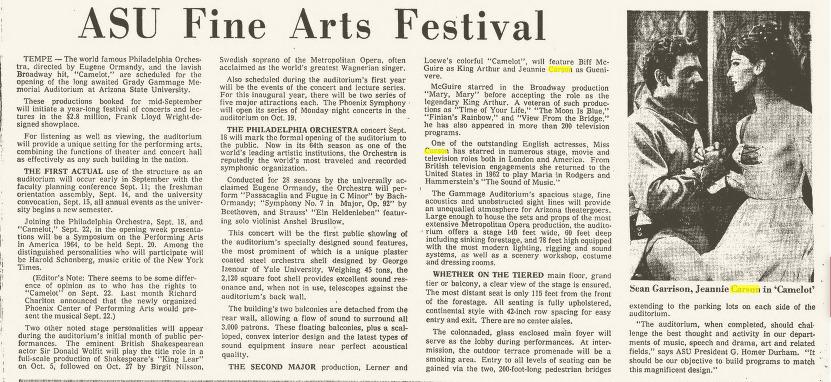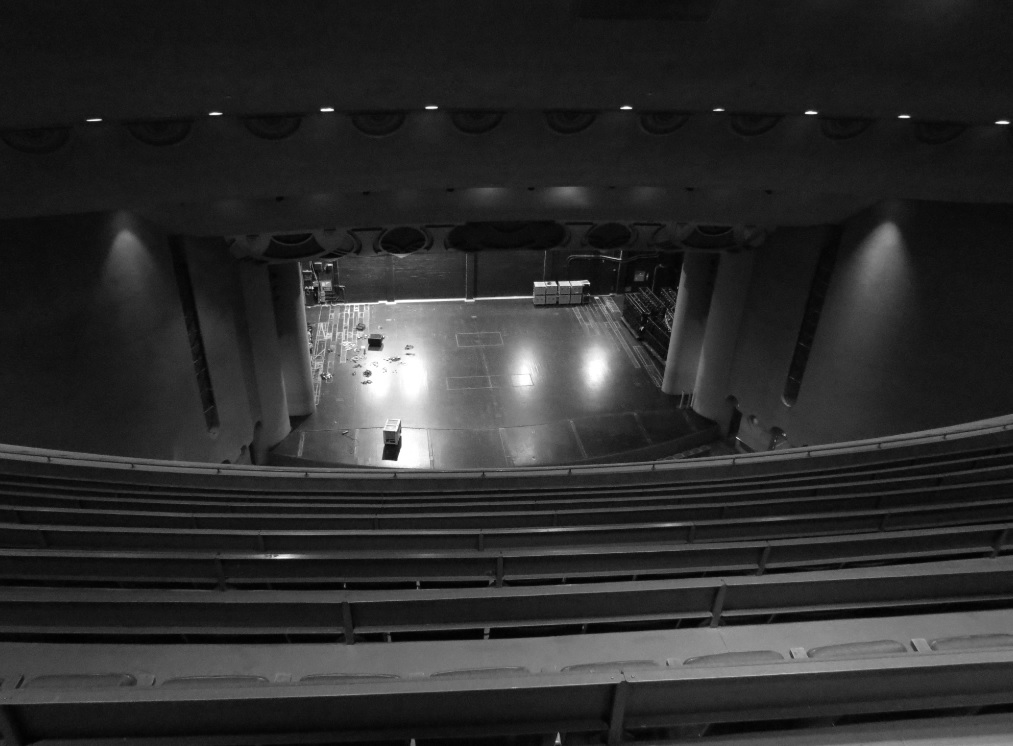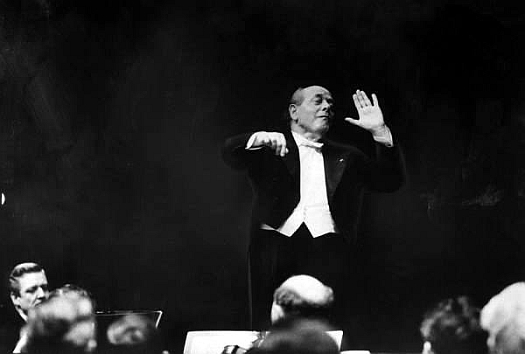
In the 1960s, Arizona State University took on the mantle of culture-bringer in Phoenix. To herald the opening of ASU’s $2.8 million Frank Lloyd Wright-designed Gammage Auditorium, the university’s 1964 Fine Arts Festival was headlined by Eugene Ormandy and the Philadelphia Orchestra and the lavish tour of the Broadway hit, Camelot.
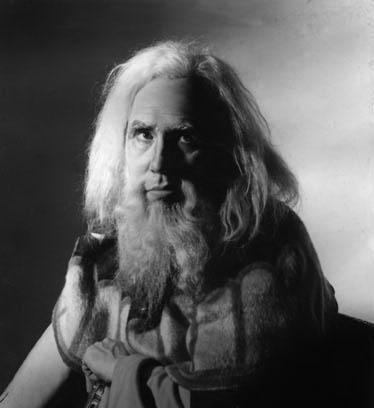
Sir Donald Wolfit, the celebrated British actor, headlined the cast of the Old Vic production of King Lear and Swedish soprano Birgit Nilsson sang music from Wagner. The Phoenix Symphony also performed.
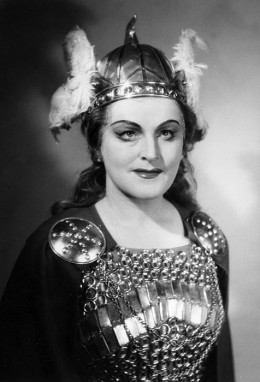
In addition, there was a symposium on the status of the performing arts in America led by Harold Schonberg, music critic of the New York Times.

Biff McGuire and Jeannie Carson were the stars of Camelot. Much excitement was registered by the casting of Sean Garrison as Lancelot. Sean had small roles in Splendor in the Grass and Bridge to the Sun, as well as in TV’s Sugarfoot and The Adventures of Ozzie and Harriet, and was predicted to become the next big male star in Hollywood.
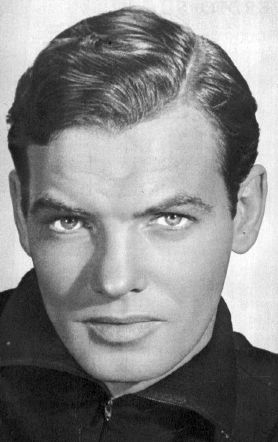
The Camelot tour was widely regarded as a “tryout” for the role of Lancelot in the megabudgeted Camelot motion picture being planned by Warner Brothers with Vanessa Redgrave and Richard Harris in the leads. Warner Bros. executives were in the Gammage auditorium opening night to see Sean’s performance. Apparently they weren’t impressed. (Actually, it was reported in one Tinsel Town gossip column that studio head, Jack L. Warner, didn’t think he was handsome enough (!) )Italian actor Franco Nero was cast in the role. To add insult to injury, Franco had to be dubbed while Sean possessed a superb baritone. After coming off the tour, Sean’s career was limited mostly to TV guest-star appearances.
In addition to opening Gammage, the festival marked the debut of the new acoustical shell designed for Gammage Auditorium by George Izenour of Yale University. The 45-ton, plaster coated steel shell telescoped against the stage’s back wall when not in use. It contributed greatly to Gammage’s reputation as one of the finest auditoriums in America in which to hear music.
Also were on show were the auditorium’s much talked about “floating balconies.” The two balconies were detached from the rear wall, allowing an unimpeded flow of sound around the more than 3,000 patrons.
Gammage’s stage – big enough to house the largest Metropolitan Opera production – is seen from one of the famous “floating balconies.”
Gammage officials bragged that the stage was large enough to “house the sets and props of the most extensive Metropolitan Opera Company production.” For the statistical minded, the stage was 140 feet wide and 60 feet deep (which included a forestage that sank into the basement). The height of 78 feet allowed for the most elaborate lighting, sound and rigging setups of any theater in the Western United States.
The most distant seat from the stage was 115 feet. Seating was continental style, meaning no center aisle.
The facility also included scenic and costume shops and dressing rooms.
